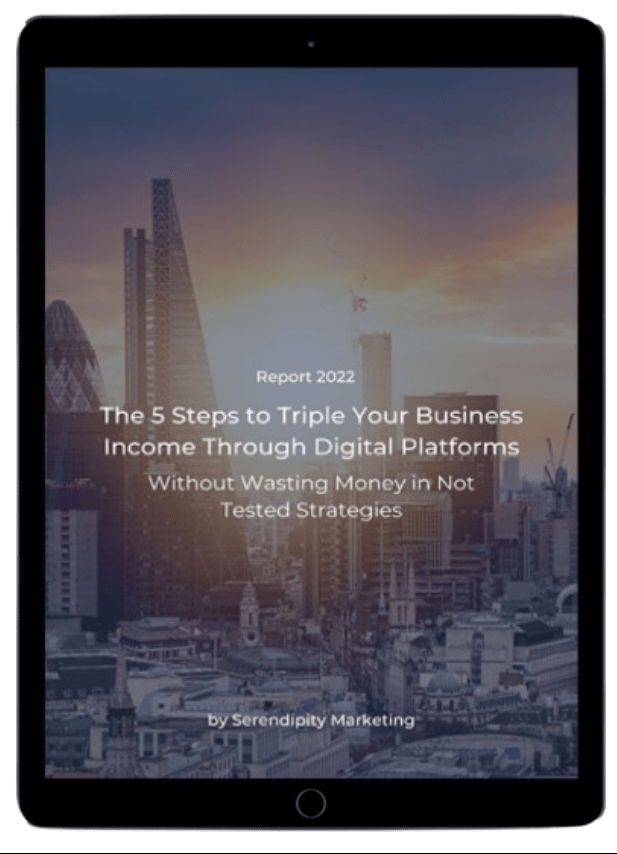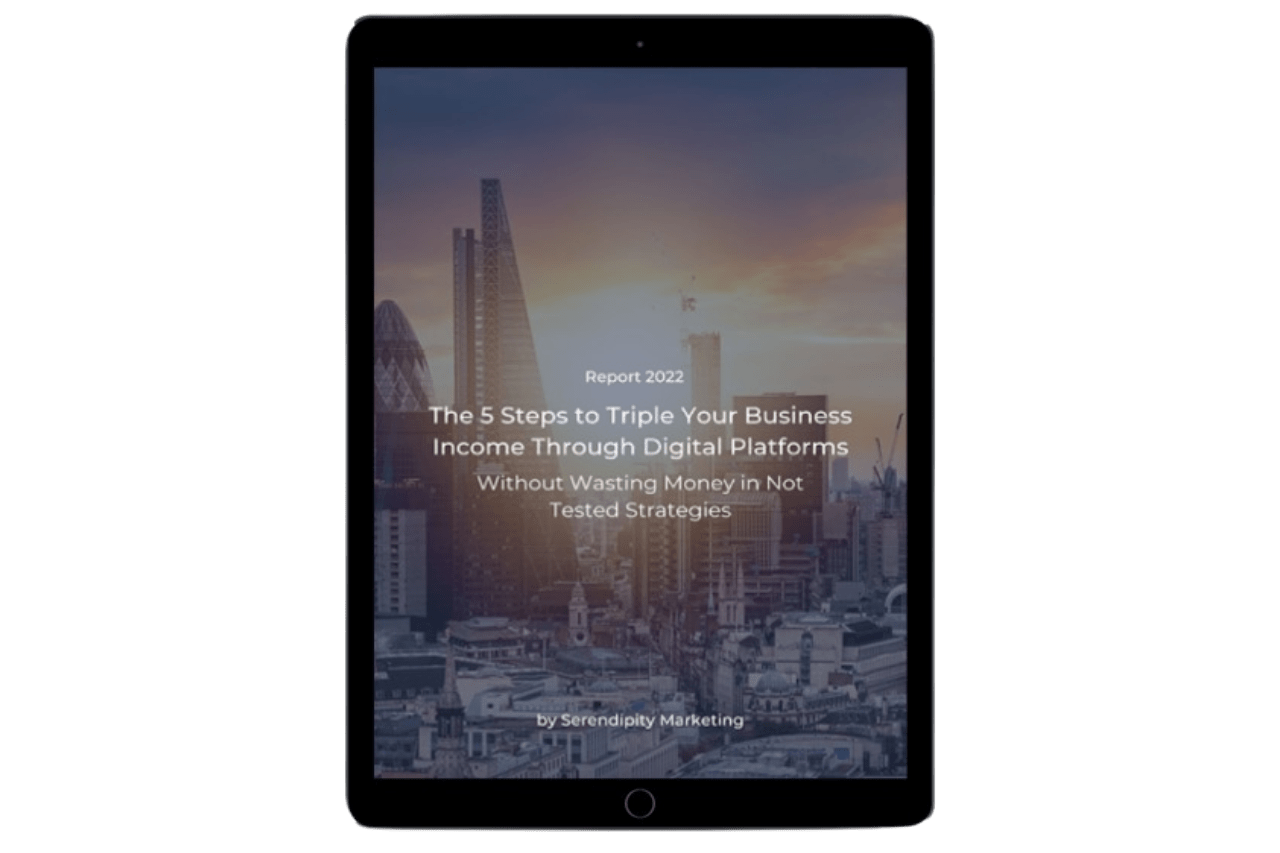“How much should my small business marketing consulting budget be?”
If you have a business and you want to grow, then you probably ask yourself this question.
And, this isn’t always an easy question to answer. But by the end of this article, you will know exactly what you should be doing to calculate your marketing budget step by step.
Now there are several unique factors that go into the side in your marketing budget and we work with companies who have a million-dollar annual marketing budget, companies who have a half a million-dollar annual budget and even companies who only have a £20,000 annual marketing budget.
However, regardless of budget size, we’ve been able to produce a positive return on investment for our clients.
When we started our agency in 2019, we would always ask our prospects: “So, what’s your marketing budget?”
Then we could match them up with a plan that they could actually afford.
But then, we started getting some pretty strange responses like:
I don’t really know if my budget is £50.
Can I pay you on a commission?
My budget is unlimited get me the results and I’ll get you the money!
Needless to say, the responses weren’t ideal.
That’s when we realize we needed to help people think about their marketing budget, in a smart and profitable way.
“The business that spends the most to acquire a customer wins” (Dan Kennedy)
Simply knowing your budget can help you crush your competitors.
I’m going to show you how to break down and calculate your marketing budget in 3 simple steps.
STEP 1 to find out your small business marketing consulting budget:
Determine your Average Order Value (AOV)
Your marketing budget is a very simple number but there are other numbers that go into making up your budget. One of these numbers is Average Order Value or AOV.
Average Order Value or AOV is simply the average price a customer pays you for your products or services.
So, if you have one product that its price is £100, then your AOV is £100.
But, if you have multiple products and multiple services, then get into your AOV can require a little bit more work.
The best way to do this is to go back and look at some historical data in your company.
So, if you have an established company then what you want to do is to gather some historical data that gives your total revenue and divide that by your total clients.
If you’re a new company then keep reading because I have something for you later on in this article.
Now, once you have your Average Order Value or AOV, then it’s time to move on to…
STEP 2 to find out your marketing consulting small business budget:
Determine your Life Time Value (LTV)
Life Time Value or LTV is simply the total amount of Revenue or value you receive from your customers.
For example, if you have an AOV of £100 and your customer buys from you 10 more times, then your LTV is £1,000.
So, as you can see is really critical to know what your LTV is when you’re thinking about your marketing budget.
Here’s a simple formula for LTV.

The goal for most successful companies is to constantly increase the LTV of their customer base.
Amazon, for example. Their goal isn’t to get you to buy only one product. But they rather get you to come back and buy again and again.
STEP 3 to find out your marketing consulting for small business budget:
Determine your Customer Acquisition Cost (CAC)
Customer Acquisition Cost known as CAC is simply the amount of money that you’re willing to pay to acquire a customer.
This stuff really helps you to assess your own risk tolerance. That’s because it helps you to determine how much money you’re willing to burn before your profitable. Which is especially important.
If you’re taking out personal loans to get your business started. Every dollar counts.
It’s probably less important if you have some capital from an outside investor, who is chasing appreciation instead of profitability.
To determine your desire CAC you must consider all your expenses like staffing costs, product costs, office space, shipping, etc.
Now, sticking with our last example, if your LTV is £1,000 and your expenses are £100 and you want to be at least 10% profitable. Then your max CAC is £800.
The formula is you are a NEW BUSINESS and you need to get a prevision:

The formula is you are a STABLE BUSINESS and you want to know your Customer Acquisition Cost:

So a low desired CAC displays a lower risk tolerance or a low amount of cash to spend.
And high desire CAC displays a higher risk tolerance or more cash to spend.
STEP 4 to find out your business marketing consulting budget:
Determine your desired Return On Ads Spend (ROAS)
Returning On Ads Spend or ROAS is simply to divide the money that you make through ads by the money that you spent.
For example, if you spend £100 and then make £150, then your ROAS is 1.5.
Here is the formula to calculate your ROAS:

Sticking with our last example, let’s say you want to make at least a 20% gross profit margin and your CAC is £800. That means your desired ROAS will be 1.25 and here at Serendipity Marketing, we like to target a minimum of 3 ROAS. But we’ve seen that number be much higher and much lower.
So, the key is to really think about how much you’re willing to burn. Especially in the context of the competitive landscape that you’re in. Ie. Your competitors’ prices.
Let’s tight all this together into your marketing budget. The first thing you need to know is that we recommend you set an annual marketing budget. In this way, you’ll have some good data on all the metrics that we just went over, after about a year.
Then, you can do your review.
During your review, you need to make sure that you are increasing your Average Order Value (AOV), your Life Time Value (LTV) or your Return On Ads Spend (ROAS). Especially, before you decide to make any changes to your marketing budget.
Now, let’s look at how to find your Small Business Marketing Consulting budget!
There are 2 ways to do this:
The first way is what we like to call THE GROWTH METHOD:
This method is ideal for anyone who’s making under £250,000 in annual revenue.
At this level, you’re just going to focus on growth and visibility. The goal is to have your brand out and get some business on the way.
We recommend you spend at least £9K into £12K a year on your marketing and advertising and along the way make sure you’re gaining some traction.
That means, gaining some data on your Average Order Value, on your Life Time Value and your Return on Ads Spend, but don’t try to be perfect yet. Then after a year, go back and look at your results and make some honest conclusions.
The second way to do this is what we call THE REVENUE METHOD.
This method is ideal for anyone who’s making over £250,000 annual revenue.
Here’s how it works.
You will allocate at least 10% of your revenue for your marketing cash. So if you make £250,000 a year, then 10% of that will give you £25,000 in marketing cash.
This is the amount that you can burn each year while maintaining profitability. Now, we just need to figure out how quickly we want to grow.
Recalled that your CAC is the money that you’re willing to spend to acquire a customer. So, sticking with our previous example, if your CAC is £800 and your annual marketing cash is £100,000 then, you can expect to require about 125 customers a year. Therefore, the formula for your marketing budget is simply:

The questions you must ask now are:
How much do you want to spend to acquire customer?
And how many customers do you want in the context of your marketing burn?
The best way to answer those questions is to know your AOV, your LTV and your CAC and along the way, measure your Return On Ads Spend.
Now you might feel like this:

Am I right?
Don’t worry.
I have one bonus for you to help you get started.
Certain marketing channels and platforms cost more than others. For example, paid advertising channels like Facebook Ads and Google Ads usually cost more than organic advertising channels like Facebook posts or SEO, but the trade-off here is that organic advertising takes a lot of time before you start seeing results.
However, if your CAC is too low and some advertising channels may be too pricey to start out with.
That’s forcing you into more organic brand building strategies.
The biggest mistake that I see people make again and again, is starting with a marketing channel that won’t work long-term. Just because they have the money right now, it doesn’t mean they’ll be able to scale it out later.



